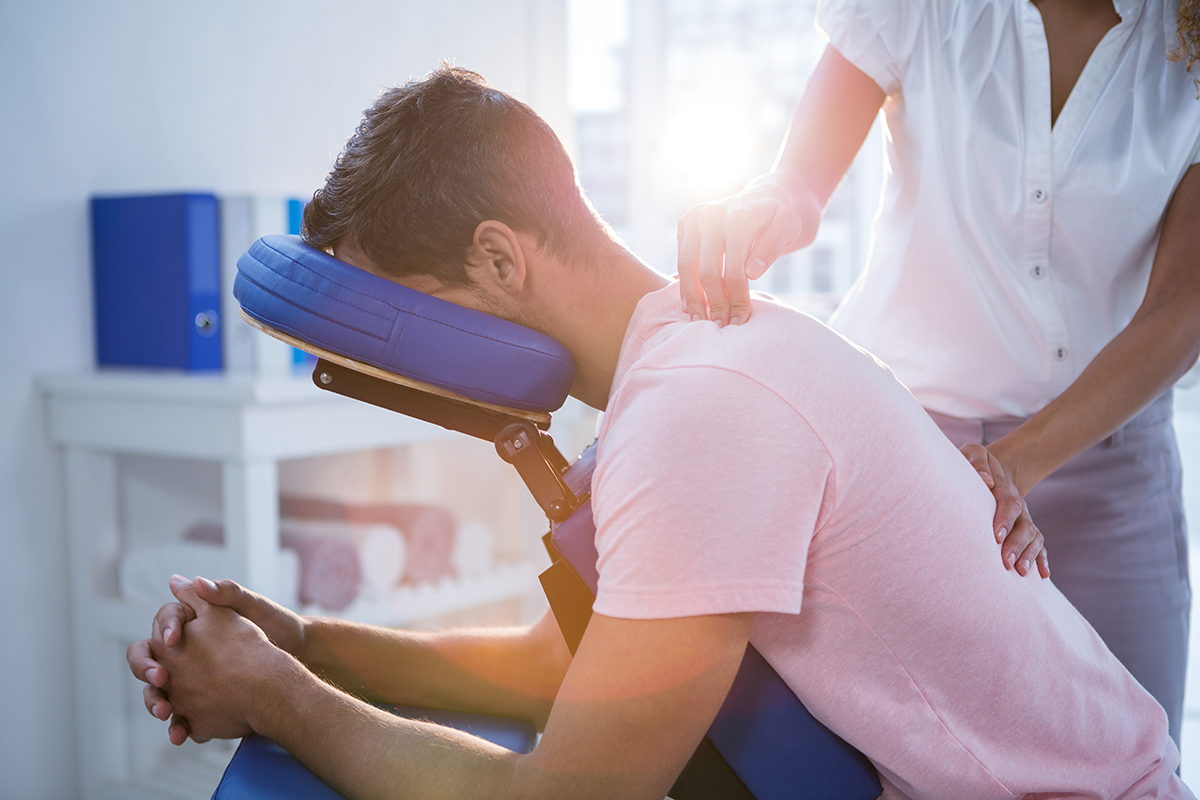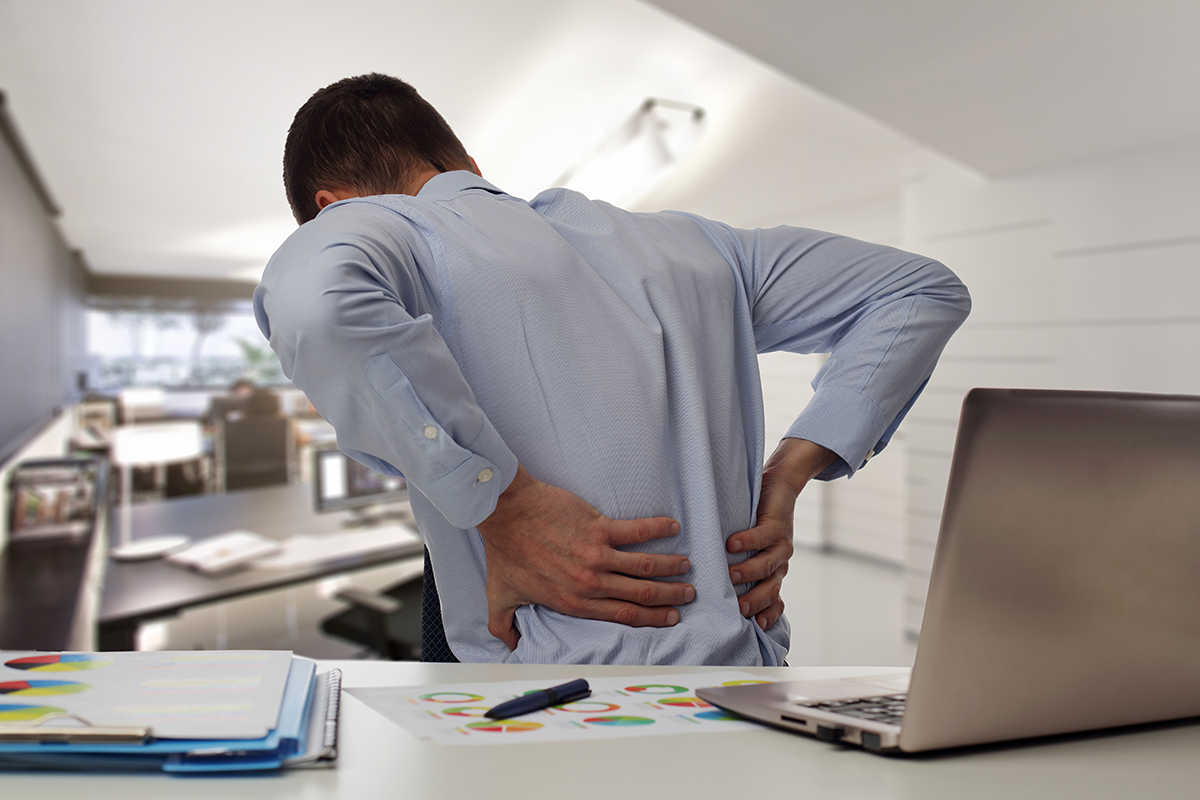Lack of flexibility, back pain, tension and bad posture? You may be suffering from spinal torsion. Torsion is a technical term which simply refers to the pressure applied to something when it’s twisted. However, while a spine is typically very flexible, continued detrimental pressure in the form of spinal torsion can cause a whole range of problems, including chronic pain. Thankfully, it can be treated with massage therapy. Here’s all you need to know about spinal torsion – from its symptoms and consequences to how to properly combat it.
What is spinal torsion?
Spinal torsion, and the twisting of the spine that it entails, is a health issue that can contribute poor posture, ongoing pain, and reduced flexibility.
The twisting of the vertebrae occurs around the internal posterior longitudinal ligament, which has the effect of distributing pressure unevenly through your spine, and therefore, through your body. While it’s often observed in scoliosis (when the spine curves from side-to-side with a curve progressing towards an ‘S’ shape), spinal torsion is actually just the rotation of the spine, and is a different (yet frequently related) phenomenon to scoliosis.
Even though the term spinal torsion will often refer to the permanent twisted state of the spine, it can also refer to the extra stress you place on your spine, for example through bending or lifting weight. Some activities will naturally bring about spinal torsion, such as playing golf or bending to pick up something with one hand. The difference is that these activities usually result in a temporary torsional loading which is placed on your spine – as opposed to the permanent torsion described above. Of course, care needs to be taken in day-to-day activities involving bending and lifting (especially if you have existing spinal conditions). However for a healthy person, some pressure, torsion and various other movements are necessary for a healthy and active lifestyle.
How to diagnose spinal torsion
An experienced practitioner will be able to spot spinal torsion, even if it is not always accompanied with pain. It’s possible to detect the signs of spinal torsion even without the use of X-rays and further analysis of the spine. Of course, it’s best to treat early cases of spinal torsion in order to bring alignment to the body and avoid the worsening of its symptoms over time.
How to treat spinal torsion
Spinal torsion manifests within the back alongside patterns of (unhealthy) movement and results in a musculoskeletal imbalance. This means that while the spine is displaced, the surrounding muscles are being utilised inappropriately by the body to try to counter the imbalance. Combined with scoliosis, this could result in the manifestation of a prominent scapula on rotated ribs, visible as a lump on one side of the back behind the shoulder. Massage techniques can be effective in treating imbalances such as this, and can help to bring alignment to the body. For example, massaging the area to focus on realignment can help to relieve the displacement and stress placed on the body.
For those with spinal torsion, massage therapists and clinics with knowledge of relevant techniques that can assist in treatment.
For professionals looking to expand their skill set, Discover Massage Australia offer a unique and focused ‘How to Treat Spinal Torsion’ course. Designed by Andrew Macfarlane, a chiropractor and one of our massage course developers, this comprehensive online training series shows you how to identify, assess and treat spinal torsion in your clients. One of Andrew’s passions in manual therapies is being challenged to resolve complex soft tissue dysfunction. Andrew has found over 25 years of experience as a chiropractor how effective balancing of the pelvis and along the vertebral column is when incorporating soft tissue therapies. You can learn more about the course here.
While treating spinal torsion more effectively can require specialised knowledge, skills and training, there are also a number of things that you can do in your day-to-day life to reduce the risk of injury and to maintain optimal spinal health more generally.
For example, correct posture and working conditions are essential for office workers; lifting techniques must be followed for those in active roles; and quality footwear will make a big difference. Additionally, regular exercise, some strength training, yoga, stretching, and good sleep practices will also go a long way towards helping you maintain good spinal health. Transitioning between a yoga cat pose and cow pose promotes spinal alignment, as do pelvic stability building exercises like sitting against a wall with your feet and knees hip width apart and knees at a 110 degree angle.
Don’t wait for symptoms to worsen
Spinal torsion is a common condition – but not a pleasant one. It can be hard to stop for a minute in our busy lives, but it’s crucial to listen to your body and take a break when you need to. If you’re experiencing stiffness, back pain, bad posture, or wake up feeling tired, talk to healthcare practitioner to see of you’re suffering from spinal torsion.
Over time, massage and manipulation of the body can relieve the pain and result in increased movement, better posture and renewed flexibility.
If you’d like to learn more about how to treat spinal torsion, read more about our online course, taught by expert practitioners, here.


